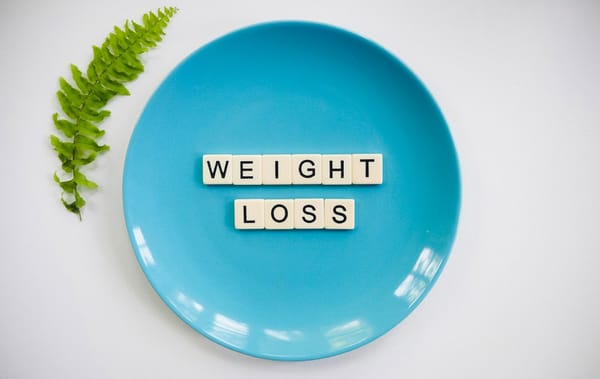The Truth About TDEE and Hormonal Fluctuations: How Your Body’s Needs Change

Many factors affect Total Daily Energy Expenditure (TDEE), including metabolism, activity level, and body composition. However, the role of hormonal fluctuations in altering the energy needs of the body is quite often ignored. Hormones are the chief agents in metabolism regulation, appetite, and energy expenditure, and their levels rise and fall across different life stages such as puberty, pregnancy, menopause, and stress.
This paper intends to show how TDEE is influenced by hormonal changes, what you can do in order to manage those changes, and how to optimize your nutrition and activity levels to stay in energy balance.
Understanding the Relationship Between Hormones and TDEE
Hormones are chemical messengers in the body that almost affect every physiological process. The most pertinent hormones in relation to TDEE include:
- Thyroid Hormones (T3 and T4): Their primary function is to control the metabolic rate and thereby determine calories burnt at rest.
- Insulin: This is responsible for blood sugar levels and energy storage.
- Leptin and Ghrelin: They communicate hunger and satiety, thus affecting calorie intake.
- Cortisol: This is the stress hormone that can potentially affect metabolism and fat storage.
- Estrogen and Testosterone: The two hormones that relate to muscle mass, fat distribution, and metabolic rate.
Since these hormones fluctuate with age, stress, lifestyle changes, and medical conditions, the TDEE is therefore not static. It really changes over time with corresponding changes in diet and exercise needed to make up for it in order to maintain the balance.
How Hormonal Fluctuations Affect TDEE
- Puberty:
The changes in hormones during puberty bring about rapid growth and muscle mass accretion that will increase energy demands. It is during this change that boys will mature faster and progress, thanks to the higher magnitude of testosterone levels produced in them. All these factors accumulate to explain why TDEE might be higher for boys than for girls when tided with a higher level of physical activity and nutritional needs. - Menstrual Cycle:
In women, TDEE may also change throughout the menstrual cycle. According to some studies, energy expenditure marginally increases in the luteal phase (post-ovulation phase) due to pronounced changes in progesterone. This may lead to changes in appetite and increased calorie burning.
Women attuned to their cycles can often notice differences in appetite or then energy levels, humors, and temperament across the phases. - Pregnancy:
The TDEE further significantly elevates when a woman becomes pregnant, as that entailed demand in energy needs has to be reproduced to meet the further complication of carrying a growing fetus, hormones, and increased blood volume. At the same time, the metabolic rating surges, with an extra intake of roughly 300-500 calories necessary for the proper development of a mother and fetus, hence the essential need for proficient nutrition. - Menopause:
When this period comes to a close, a woman experiences a decrease in estrogen levels, which leads to changes in fat distribution and metabolism, reduction of muscle mass, and eventually leads to a decline in TDEE. The lower TDEE accounts for the propensity to gain weight at an unchanged caloric intake; therefore, protein consumption and strength training become so very important in this period: to maintain lean mass and thus, in turn, support metabolism. - Aging and Andropause (Male Hormonal Changes):
Andropause is the issue, and this is where men also begin to experience hormonal changes related to aging. With it comes the parallel gradual decline in testosterone levels in men and the consequent drop in muscle mass with it, leading to a decreased metabolic rate and, hence, a further reduction in TDEE. In this scenario, men have to increase their intake of calories while continuing to actively lead life to prevent unnecessary weight gain.
These forces combine to produce stress and heightened levels of cortisol that often end up slowing metabolism and causing the body to store fat, which is very much present at the belly. How cortisol can play a role in increasing appetite and food cravings, particularly for high-calorie foods that could easily interfere with weight management.
How to Manage TDEE During Hormonal Changes
Understanding that hormonal fluctuation is a normal part of life can help you manage TDEE and staying well on that path.
- Strength Training and Physical Activity:
Engaging in regular physical activity is essential to avoid muscle wastage that would otherwise happen due to hormonal changes. Therefore, to keep TDEE high, body composition needs to be developed through resistance training at least twice or thrice a week and a combination of aerobic and anaerobic activity. - Balanced Diet:
Diet is the key point in the management of hormonal changes and TDEE. Most adjustments should, therefore, be aimed at:- Protein Intake: Important in keeping muscle mass and boosting metabolism.
- Healthy Fats: Ingredients for hormone synthesis (for example, fats from avocado, nuts, seeds, and olive oil).
- Complex Carbohydrates: For continued energy and in the process helping to regulate insulin.
- Hydration: Adequate water intake should support metabolic functions and digestion functions.
- Stress Management:
Therapeutically it is important to initiate stress management techniques so that cortisol does not work negatively on metabolism. Meditation, yoga, and deep breathing, plus sufficient sleep, are factors that can bring cortisol levels to a standard so that weight is not gained due to stress. - Adjusting Caloric Intake:
If there has been any slow per the metabolism due to hormonal changes, then the intake of their calories should be decreased accordingly. The intake could also be decreased if the level of activity is reduced or increased in case of high-energy phases, such as pregnancy or adolescence. - Sleep and Recovery:
Good hormonal balance requires quality sleep since disruption in sleep might tamper with hunger-regulating hormones (leptin and ghrelin) that tell when the body is hungry and eventually lead to an increase in appetite and weight gain. Setting aside 7—9 hours of restful sleep every night would help to support metabolic function.
Conclusion
Hormones largely affect your TDEE and energy requirements. How to cope with stress for maximizing TDEE and energy needs for puberty, pregnancy, and menopause, resulting in a balanced diet and lifestyle relating to adequate exercise, nutrition, stress management, and sleep, so as to maintain an optimal TDEE for supporting health in the long run.



